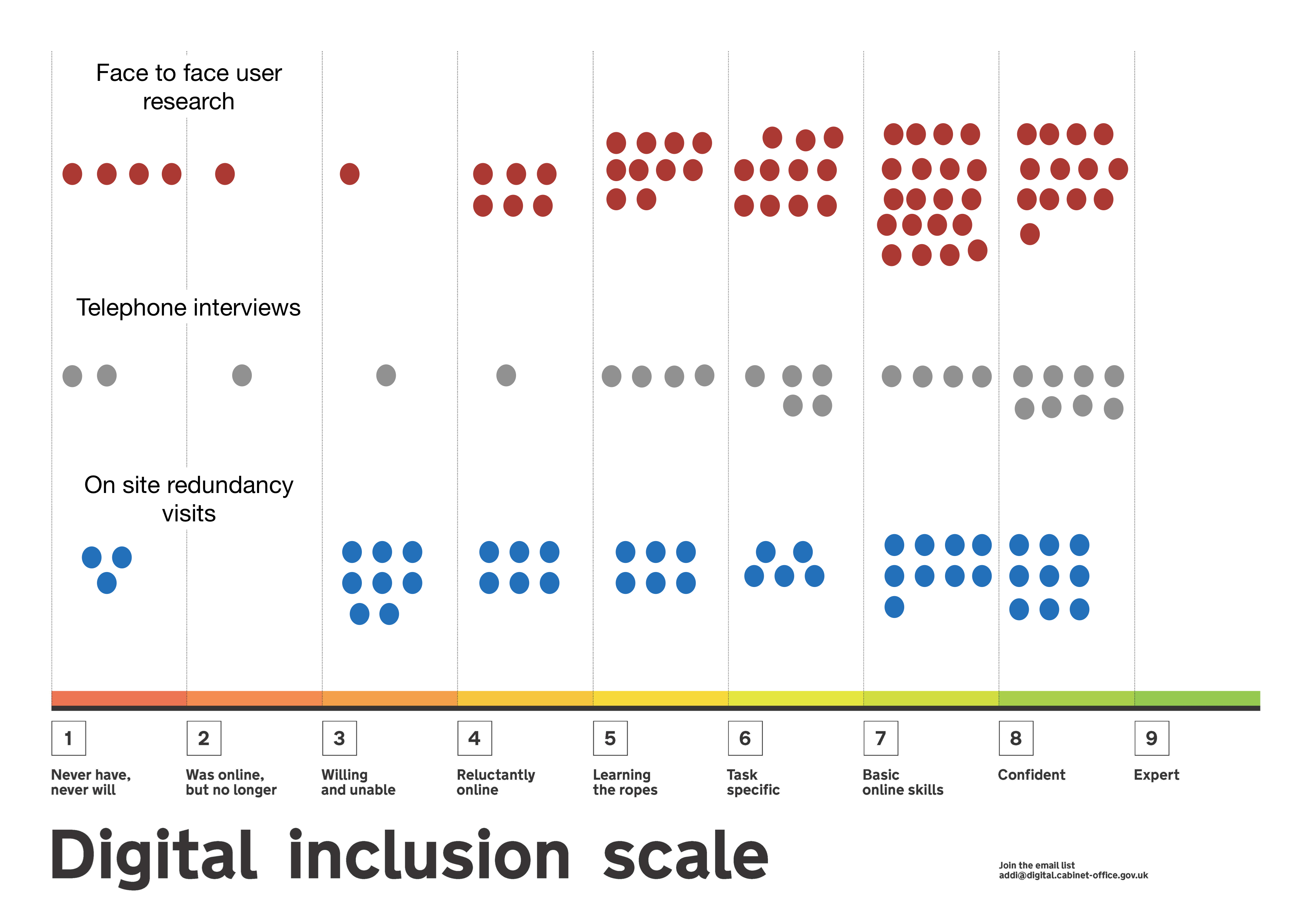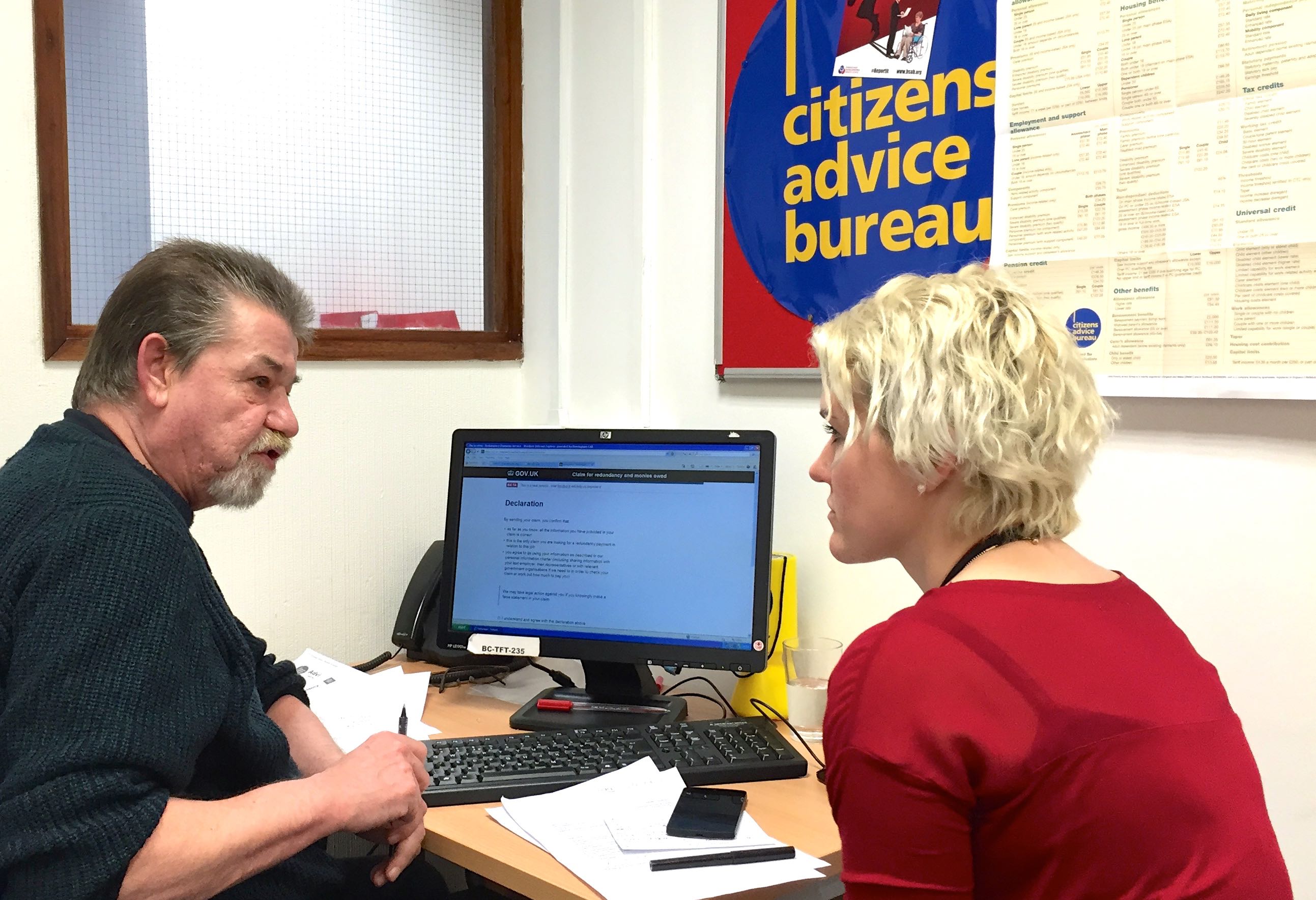The Redundancy Payments Service will shortly be released as a public beta service having passed its recent service assessment on all 26 points, including putting appropriate assisted digital support in place for those who can’t complete the service independently online. The service team explain how they went about designing and testing their assisted digital help.
“A really important factor was that we started work on developing the support early on in our service development, and made sure that it was based on solid research into our users’ assisted digital needs.
This included:
Interviews and service testing
Exploring the wider user journey
Offline surveys
Once we had spoken to staff in the agency, including the enquiry line and the intermediary insolvency practitioners, one of the first things we did was a telephone survey of users who had completed paper forms. We recorded their responses using a Survey Monkey form, which meant that we could analyse results and refine the questions as we went along. We surveyed over 500 users, which gave us a really good idea of the likely volume of users who might need support and the type of support they needed. In hindsight, we might have asked fewer, more targeted, questions to speed the process up, though it was useful to see their answers to different questions.
We also made the delightful discovery that a paper survey was already being sent out to all Insolvency Service users, and this included a question about whether they could have completed an online form. This enabled us to target further research on users with low digital skills who had completed that survey.
Interviews and service testing
More qualitative approaches gave us a deeper understanding of our user needs. As well as following up with our survey respondents, we held a lab testing session aimed specifically at users with no, or low, digital skills. Our research agency recruited 10 users with a range of digital skills. Although small in number, this research provided detailed findings which we used to improve the digital service for everybody - designing for assisted digital users encouraged us to make the transaction as simple as possible. In hindsight we could probably have recruited offline users more effectively ourselves and this is something we will bear in mind for future research. We mapped users on the Digital Inclusion Scale to ensure we were covering a wide enough range of offline users, and to help us to gauge the level of help they might need.
Exploring the wider user journey
We visited jobcentres, speaking to staff who provide help to users involved in redundancies, observing and speaking to users to find out about their experiences. We spoke to staff in libraries and citizens advice bureau and carried out pop up research. This helped us greatly in building a better picture of the support users were most likely to need and which tied into their existing user journey.
Testing support
During private Beta we carried out more detailed research, including testing our assisted digital support. We worked with insolvency practitioners to observe how they helped users who were made redundant during insolvency. This included both observing insolvency practitioners helping users to submit their forms electronically and giving them help ourselves.
We also trialled assisted digital telephone support. We chose to use our own contact centre as our users had indicated they trusted our staff. This included ‘talk through’ support for users who have some skills and are online but needed some help to carry out the digital transaction. This was something many of our users said they’d find helpful. Our telephone support also includes an option for call centre agents to fill in the digital form on behalf of users if they cannot do so by themselves .
In addition we tested face-by-face assisted digital help, as our research indicated some users would need this. We are very grateful to Birmingham Community Libraries and Citizens Advice Bureaux for the help they are giving in the ongoing testing of our face to face assisted digital support.
Next steps
We have learnt a lot so far about our offline users. One of the barriers to testing our assisted digital support, up until now, has been the easy availability of the paper form. Rather than benefiting from the digital service, with its faster processing times, clearer questions and built in error checking, users are still able to choose to use the paper form. During public beta we will continue to test our assisted digital support with users, including in situations where the paper form is no longer so readily available.”
Follow Assisted Digital on Twitter and don’t forget to sign up for email alerts




1 comment
Comment by Jess posted on
Great read, and really interesting to see how you tackled AD!